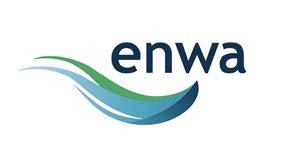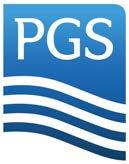










46 %
of deals had foreign bidders in 2023.
Most active sectors
By volume
2023
#1: Computer software (15.2 %)
#2: Services (other) (13 7 %)
#3: Energy (11.5 %)
By value
2023 2022 2022
#1: Computer software (€20.5bn)
#2: Energy (€6.3bn)
#3: Transportation (€2.8bn)
#1: Computer software (12.9 %)
#2: Energy (12.4 %)
#3: Services (other) (11 2 %)
#1: Energy (€9.0bn)
#2: Seafood (€8.3bn)
#3: Computer services (€3.5bn)

Øystein Guvåg, Partner and Head of BAHR’s Corporate M&A group
2023 was another year characterized by uncertainty and concerns. Geopolitical instability continued with ongoing wars in Ukraine and Gaza. The fight against inflation and sharply increasing interest rates remained the key economic topic throughout the year.
In Norway, economic activity remained relatively resilient.
Higher interest rates led to distress in certain areas, most notably commercial real estate, but it has yet to lead to a broader contagion. As of early 2024 it appears that Norway, like many key economies, is moving in the direction of a “soft landing”, where inflation is coming down without the restrictive monetary policy causing a severe recession.
Stock markets performed well with the OSEBX being up 9.9% for the year. We also saw a number of large public transactions, including the take private of Kahoot!, the tender offer for Adevinta, and the
merger between the leading seismic players TGS and PGS. However, the IPO market was muted with only ten new listings throughout the year, which is the lowest number seen since 2016.
Against this backdrop, the Norwegian private M&A market showed high activity, outperforming many other markets. With more than 700 registered transactions, 2023 represented the highest deal count ever registered by Mergermarket. As in 2022, the most active sector were Software, followed by Services and Energy.
Number of transactions
Private equity had a rather challenging year in 2023. Large exit transactions were harder to complete, and the IPO window was effectively closed. Private equity funds were still active in the M&A market, but contributed relatively less deal volume than in previous years. In 2023, private equity was involved in 27% of the transactions compared to an average of 33% in 2021-22 (1). A majority of the private equity deals where add-on acquisitions, as opposed to new platform investments or exits. The infrastructure segment has stood out as an exception with several sizable transactions attracting wide interest. One trend that has been persistent in past surveys is the influence of
(1) Source: Mergermarket, EY
the M&A insurance market on the SPA terms observed in the wider M&A market. This is not a new trend, but nevertheless quite visible in this year’s statistics.
A “typical” example is the warranty periods of 24 months for general warranties and 7 years for fundamental and tax warranties. Clear market standards are increasingly cemented in relation to many key transaction terms. Of course, it is possible to deviate from these, but the threshold of argument is generally higher the clearer the market standard.
After another active M&A year in 2023, what can we expect for 2024? Financial markets shrugged of political uncertainty
in 2023 and is expected to do the same in 2024. Interest rates is anticipated to be close to peak in most western economies, and to start going down in 2024. In Norway, market participants are talking about a substantial pipeline of IPOs, following 2023 when the IPO window was more or less completely shut.
However, the IPO market does generally not seem to be very attractive in the short term and when it really opens again remains a question. The weak IPO market increases the push
towards sale processes, and a larger number of exit processes are now structured as “dual-processes”.
Indicators are pointing toward an active year in the Norwegian M&A market. We believe that private equity will increasingly get back in the game and make up a larger share of transaction volume than in 2023. If the market picks up as expected it would be interesting to see where transaction terms are trending.


Earn-out (Pre-2023 vs. 2023)
Earn-out or deferred compensation is a tool to distribute risk related to future earnings of the target between buyer and seller. We typically see that earn-outs are more common in uncertain times. We saw that the share of transactions involving earn-outs rose in the immediate aftermath of the pandemic in 2020-21, while the share receded somewhat in 2022.
In 2023, 46% of the transactions included some sort of earn-out element vs. approximately 28% for the pre-2023 period. Data for one year only may include random fluctuations. Still, the general market sentiment in 2023 have some similarities with the situation in the aftermath of the pandemic; healthy deal making activity despite substantial
Yes
No
uncertainty regarding near term economic outlook.
The typical earn-out mechanisms are linked to the EBITDA or EBITA performance of the target for the 1-3 years following the transaction. We do increasingly also see more creative structures that are perhaps more directly aligned with the economics of the buyer. One example could be a long-term structure which is linked to the return on investment that a buyer (typically private equity) achieves from a future exit transaction. Another example is where the sale and purchase of shares is linked to a subsequent plan for substantial capital investments. In such cases it is common to have deferred payments that are contingent on meeting certain milestones in the project.
Locked box is the preferred mechanism for purchase price calculation
Locked box has persistently been the dominant mechanism for determining the purchase price in Norwegian M&A transactions. Closing balance sheet is somewhat more common in our sample in 2023, making up 40% of the total.
Looking at the total sample collected over a 5+ years period locked box is still used in around 70% of transactions. The preference is even stronger among financial buyers where locked box is used in 80%+ of all relevant transactions.
Generally, market participants in Norway prefer the
predictability provided by the locked box mechanism. All negotiations and price discussions are carried out prior to signing. Once the negotiations are completed the parties have a clear agreement of what the final purchase price will be.
Closing balance sheet on the contrary may be preferred in transactions where the parties expect a long period from signing to closing, e.g. because of competition clearance issues. In these situations, closing balance sheet could be seen to reflect a more “correct” purchase price at the date of closing.
The purpose of the locked box interest is typically to compensate the seller for the expected cash flow generated by the target in the period from the locked box accounts date to closing. As such it might be somewhat surprising that only 14% of the transactions have a locked box interest of more than 5% p.a.
First, around 60% of all transactions do not have any separate interest element, at least not explicitly stated in the SPA. This is quite common for smaller transactions. These transactions typically have a shorter time period between signing and closing. The interest element is therefore often seen as less important (at least when interest rates were low) and
typically included in the overall price negotiation. The share of transactions without any explicit interest element has been relatively stable over time.
When excluding the none-interest transactions, we have a relatively spread-out distribution with 3-5% being the most common interest rate. In line with the general rise in interest rate levels, we have however observed a move “to the right” in this distribution in 2023, with more transactions having a 5%+ locked box interest.
We have also seen that locked box interest is slightly higher in transactions with financial sellers, indicating an even higher awareness and interest rate sensitivity in this group.
The ‘warranty MAC’ is the most common regulation of material adverse change
Yes; MAC clause
Yes; ”no material breach of warranties”
No
We differentiate between ‘true MAC clauses’ and ‘warranty MAC clauses’.
A true MAC clause relieves the buyer of its obligation to complete the transaction if a material adverse change occurs between signing and closing. In most cases, a true MAC clause requires a specific material adverse change with respect to the target company and its business, as opposed to a general ‘market MAC’ or ‘industry MAC’.
A warranty MAC relieves the buyer of its obligation to complete the transaction if there is a material breach of the seller’s warranties.
The data on MAC clauses in this year’s edition is consistent with past data. The ‘warranty MAC’ is the most common solution, occurring in more than 50% of transactions, while the ‘true MAC’ is rare. In 2023 the ‘warranty MAC’ was even more dominant occurring in more than 60% of the transactions.
During 2023 there were several high-profile cases that passed competition clearance after extensive review by the Competition Authority, including Norwegian’s acquisition of Widerøe.
Looking at the whole sample, closing is conditional on competition clearance in 40% of the transactions.
Regulation of competition clearance can vary, but in most transactions the buyer is not obliged to complete the transaction unless competition
clearance is given on reasonable terms.
In essence, strict “hell and high water” clauses entail that the buyer is obliged to take all necessary steps and comply with any remedies which the competition authorities require to approve the deal (including making divestments etc.), even if such remedies could be considered unreasonable for the buyer. Such clauses are rare and occur only in a limited number of transactions.
1120 notifications during the first 10 years (2014 – 2023) of the current merger control regime
Seller’s warranties shall be true both on signing and on closing
As in previous surveys, the clear market standard is that the seller’s warranties shall be true both at signing and at closing.
It has been consistent market practice over time to include a general disclosure warranty in Norwegian SPAs. Across the sample more than 90% of SPAs contain such a clause. In 2023, all SPAs surveyed had such a clause.
The sellers generally warrant that they have given all relevant information to the buyer prior to signing, and that there are no omissions that would materially impact the buyer’s decision to complete the transaction. The warranty is typically qualified by materiality, and in around
two out of three transactions, by seller’s knowledge. Under Norwegian background law sellers have a statutory disclosure obligation towards the buyer. As such, a general disclosure warranty is very much in line with legal tradition in Norway.
Most SPAs in our sample explicitly exclude the use of background law, wholly or partially. However, certain SPAs are either silent or not clear on this matter, and hence, potentially subject to the principles of background law.
An important distinction between the various warranties are whether they are qualified by seller’s knowledge or not.
Seller’s knowledge is defined in terms of which individuals, whose knowledge are designated to make up seller’s knowledge.
Seller’s knowledge is also defined in terms of which type of knowledge is required (actual or constructive).
Driven partly by the increasing use of M&A insurance “actual knowledge” has become
increasingly dominant as the used definition. This trend continues in 2023, where less than 10% of SPAs lack a definition, and more than 50% of SPAs used actual knowledge.
The benefit of actual knowledge is that it is more straightforward in nature, and therefore provides greater predictability. The downside (for the buyer) is that it could be hard to prove what a seller knew in the absence of clear evidence.
Limitations of disclosure warranty in scope (Pre-2023 vs. 2023)
A question in relation to the disclosure warranty is whether it covers all information given to the buyer, irrespective of form, or only the information that is included in the data room.
The benefit of limiting the disclosure warranty to only the information in the data room is that it is easy to document what information that has been provided. It also makes it easier for the seller to verify the accuracy and completeness of the information provided, and to correct it, if required.
Looking at the entire sample, 60% of transactions use
“information in the data room only”. We have however seen a trend in recent years towards this increasingly becoming the market norm. In 2023 close to 80% of the transactions used “information in the data room only”.
Approximately 80% of SPAs contain an explicit “antisandbagging” provision. Such provisions prevent the buyer from bringing claims based on matters known to the buyer at signing. Most SPAs exclude seller liability also if the matter has been ‘fairly disclosed’ prior to signing.
Warranty period - general warranties (Pre-2023 vs. 2023)
An 18-month warranty period for general warranties is still the most common, being used in 46% of the transactions. However there has been a clear trend towards 24 months in recent years. Looking at data for 2023 only, 62% of the transactions have 24 months while only 31% have 18 months.
This is an example of a general trend, through which transaction terms in the entire market converge towards what can be said to be market practice in insured transactions.
Warranty period - general warranties (Pre-2023 vs. 2023)
Fundamental warranties (such as title and capacity warranties) typically have distinctly longer warranty periods than general warranties.
The most common warranty period for fundamental warranties is 7 years, which
share has increased in recent years. Looking at 2023 data alone, a 7-years period was used in 55% of the transactions.
Like for general warranties, this is a convergence towards insured standard terms.
In the same way as for fundamental warranties, we have seen a development towards longer tax warranty periods. 7 years is the most commons, in line with the market standard for insured transactions.
“Statutory limitation period” had an upswing in 2023 where it occurred in 39% of transactions. Generally, this option is more prevalent in smaller transactions
The most common relative time limit for bringing claims is 60 days. The average is 58 days.
Only 13% of the total sample uses “within reasonable time” which is the solution under
Norwegian background law. However, in 2023 this option occurred in 27% of the transactions.
Based on our sample, we have seen a clear trend towards “reasonable and foreseeable loss” as the dominating market standard.
In the most recent period, as much as 85% of transactions fell into this category.
We have already pointed to the general influence that the M&A insurance market has had on many transaction terms, also for uninsured transactions.
The share of transactions that are subject to M&A insurance is growing year by year. For financial sellers it is deemed market standard, as the sellers get a “clean exit” where proceeds can be distributed without recourse, which is particularly important for private equity funds.
There are a number of professional insurers and brokers active in the Norwegian market, and good coverage is achieved both on more complex and smaller transactions. As always, adequate due diligence is a prerequisite for an attractive coverage.
De-minimis around 0.1% of purchase price on average
Most transactions limit the buyer’s right to make claims for immaterial/insignificant losses. The starting point for determining the de-minimis is typically 0.1% of the purchase price, however, our survey shows variations.
We generally see higher relative values in smaller transactions,
as matters should have a minimum absolute size to justify the process of bringing forward and dealing with a warranty claim.
In our data this is evidenced by the simple average being 0.24% while the value weighted average is 0.06%.
Basket around 1.0% of purchase price on average
The basket is a threshold for aggregate losses that must be exceeded before the seller can claim compensation. Almost all SPAs in our sample have a basket mechanism.
The starting point for the basket threshold is typically 1% of the purchase price. However, in smaller transactions the basket in % of purchase price will often be higher than 1%, and in larger transactions it will typically be lower.
This is evident from the simple average basket being 1.41% og purchase price, while the value weighted is 0.54%.
In most transactions (80%) the basket is a so-called tipping basket, meaning that once the basket threshold is met, the buyer is liable for all losses, not just the losses exceeding the basket amount.
Warranty cap levels vary – 20-40 % of purchase price is the sweet spot
2023 came in approximately in line with historic figures. For the sample as a whole, 60% is at 35% of the purchase price or lower, while approximately 80% is at 50% of the purchase price or lower.
The simple average is 34% while the value weighted is 16%. This
shows that larger transactions typically have lower percentage caps.
Specific indemnitees and fundamental warranties are often carved out of the general warranty cap, having separate caps often at the full purchase price.
There are no major changes to the statistics regarding security for warranty claims.
M&A insurance is growing while the other forms occur with approximately the same frequency as before
For a subset of the sample, we have collected data on whether the seller is reinvesting as part of the transaction or not.
Reinvestment can occur in different settings but is common in private equity structures, where the private equity fund typically wants to own a majority share while certain of the sellers will hold a minority share. The reinvestment can take place in the target or in another entity in the buyer’s group.
Overall reinvestment occurs in roughly half of the transactions.
The relatively high occurrence of reinvestment can be viewed in conjunction with the previously described data on security for warranty claims. Although not a formal security mechanism, the fact that the seller is reinvesting provides additional comfort the buyer. Reinvestment leads to a greater alignment of interest of the buyer and the seller. The reinvestment also means that seller will have assets that may serve as security if a claim arises from the transaction.
Non-compete and non-solicitation clauses
In 2023, 76% of all transactions contained non-compete and non-solicitation clauses. This is slightly higher than for the entire sample.
In transactions with financial sellers only around 50% of transactions contain these clauses. This is expected as private equity managers typically will not restrict the investment universe of their existing portfolio or future funds. In cases with private equity sellers, we often see compromises where the non-compete and
non-solicitation apply only to the management sellers, that will often reinvest in the transaction.
Out of transactions with management sellers, 85% contain non-compete and non-solicitation clauses. Founder-run businesses are particularly dependent on key people with their network and knowledge of the business and its markets. In these situations, restricting the seller’s ability to start a competing business is often considered paramount.
Non-compete and non-solicitation clauses mostly last 2-3 years
Non-compete and non-solicitation restrictions of 2-3 years can be considered standard market practice. In the entire sample, 84% of transactions with non-compete and non-solicitation clauses have a duration of these clauses of 2-3 years. For 2023, the corresponding figure was 95%.
Shorter periods can be agreed in special circumstances. We often
find that certain individual sellers who receive a small part of the transaction proceeds have a shorter duration.
A duration exceeding 3 years is rare, and for longer non-compete and non-solicitation clauses it must be assessed specifically if the duration can be justified in accordance with Norwegian and EU Competition law rules.
was the most common dispute resolution mechanism in 2023
The choice of dispute resolution mechanism generally depends on individual preferences.
Confidentiality, a specialist tribunal and a more efficient process favours arbitration. International buyers have a clear preference for arbitration.
On the other hand, the ordinary courts are potentially more cost
effective and there is an opportunity to appeal. This typically appeals to the parties in smaller transactions.
In 2023 arbitration was the dominant choice, occurring in 63% of the transaction. Looking at a longer period the distribution is close to 50-50.

Advised Adevinta on the public takeover

Advised on the sale of Kiona

Advised Systematic Growth on the acquisition of Ito Pallpack Gruppen AS

Advised INEOS on the acquisition of Eramet Titanium & Iron

Advised Norwegian on the acquisition of Widerøe

Advised on the acquisition of Lakers Holding AS

Advised NTS and Frøy on the sale of Frøy ASA

Advised Norvestor on the acquisition of Sefbo

Advised Allianz Capital Partners on the investment in Fuella AS

Advised on investment into Ardoq AS

Advised Neptune Energy on the sale of Neptune Energy Norway AS

Advised Equip on the acquisition of Remagruppen

Advised on the acquisition of Kahoot by a consortium of investors

Advised Skion Water on the acquisition of Enwa AS
Advised Aker Horizons on the acquisition of Mainstream Renewables
Energy and Mitsui’s investment into Aker Mainstream Renewables

Advised Nature aInfrastructure Capital on the investment in ECO STOR
Advised HitecVision on the sale of OMP

Advised DNV AS on the acquisition of Åkerblå Group AS

Acquisition of Kraft Laks by Salmon Evolution

Advised Norvestor on the sale of Veidrift

Advised on the sale of Working Group Two

Advised PGS on the merger with TGS

Advised AMSC on the sale of American Tanker Holding

Advised Endless on the acquisition of ASCO Group av
• Corporate M&A has formed the core of BAHR’s practice since its inception over 50 years ago and transactional work is at the very heart of everything that BAHR does.
• Our M&A team has consistently been ranked Tier 1 by all leading rating agencies, and it remains so today. Our practice covers all types of private and public transactions, including private acquisitions, public takeovers, coinvestments, other syndicated transactions, restructurings and exits, joint ventures, IPOs, mergers and demergers.
• The team draws on expertise from across the firm and all main industries to bring clients a comprehensive service with a commercial and tailored outlook. A seamless approach to large, complex and often multijurisdictional corporate transactions is among the hallmarks of BAHR’s practice.
• We believe well-organized and focused teams based on the ”best person for the job” principle are best suited to efficiently work on complex matters. While we will never compromise on the staffing and resources required to do the job, we aim at a lean and cost-efficient approach, as evidenced by our slogan: “Small teams for big matters”
Top ratings, Tier 1 and Band 1, in all the major national and international rankings for Corporate M&A
- Mergermarket European M&A Awards, 2023
“BAHR always provides a strong and highly competent team, with an exceptional degree of partner access for the client. In the Norwegian market we perceive them as by far the best with regards to M&A.”
- IFLR 1000“BAHR consistently delivers high quality and has resources available to turn things around quickly. When there are complex situations, time pressure or demanding counterparties, it is a comfort to know that you have the lawyers available.”
- Chambers Global“The lawyers have excellent technical legal skills combined with a highly commercial and pragmatic approach. They also provide excellent client support and turnaround.”
- Chambers Europe



ANDREAS
RØRVIK PARTNER
T +47 916 04 805
E aro@bahr.no

ANNE SOFIE
BJØRKHOLT PARTNER
T +47 970 22 193
E asb@bahr.no

ASLE
AARBAKKE PARTNER
T +47 928 81 441
E aaa@bahr.no

BØRRE SOFUS ARNET
PARTNER
T +47 930 54 063
E bsa@bahr.no

ANNE
DAHL FRISAK PARTNER
T +47 918 38 267
E andfr@bahr.no
BERET SUNDET PARTNER
T +47 928 81 385
E bsu@bahr.no
CAMILLA
JØTUN PARTNER
T +47 930 33 455
E caj@bahr.no
ERIK LANGSETH PARTNER
T +47 412 16 634
E ela@bahr.no




HENRIK AADNESEN PARTNER
T +47 915 35 615
E haa@bahr.no

JACOB MØLLER PARTNER
T +47 928 80 017
E jam@bahr.no

JONATHAN UGGEDAL PARTNER
T +47 47 611 176
E jongj@bahr.no

LARS G. NORHEIM PARTNER
T +47 928 80 030
E lgn@bahr.no

LISA MARIE OPDAHL PARTNER
T +47 926 13 323 E lisop@bahr.no
MORTEN P. SMØRDAL PARTNER
T +47 911 98 980 E mps@bahr.no
GEIR GUSTAVSSON PARTNER
T +47 982 40 524
E ggu@bahr.no
JON CHRISTIAN THAULOW
PARTNER
T +47 905 29 550
E jct@bahr.no




LARS KNEM
CHRISTIE PARTNER
T +47 924 95 977
E lkc@bahr.no

OLE ANDREAS
DIMMEN PARTNER
T +47 414 388 21
E oadim@bahr.no

PETER HAMMERICH PARTNER
T +47 928 81 389
E ph@bahr.no

SVEIN GERHARD
SIMONNÆS PARTNER
T +47 908 31 527
E sgs@bahr.no
ROBBIN BAKKEN PARTNER
T +47 934 09 900
E rba@bahr.no
STIG KLAUSEN ENGELHART PARTNER
T +47 470 11 112
E skl@bahr.no
THOMAS K. SVENSEN PARTNER
T +47 924 04 921
E tks@bahr.no


This survey contains information in summary form and is therefore intended for general guidance only. It is not intended to be relied upon as legal advice or be a substitute for detailed research or the exercise of professional judgement. Please refer to your advisors for specific advice. BAHR will not accept any responsibility for loss occasioned to any person acting or refraining from action as a result of any material in this survey.
Advokatfirmaet BAHR AS bahr.no